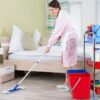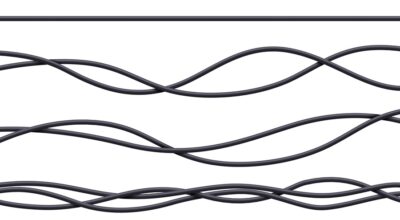Ready to breathe easy and enjoy your home without sneezes, musty smells, or sticky humidity? You’ve landed in the right spot! Indoor comfort is more than temperature—it’s about freshness and health too. Good air quality helps your home feel clean, calm, and inviting.
Homes by the coast, especially in Indian Harbour Beach, FL, face a challenge: high humidity, salty breezes, and warm temperatures year-round. That mix leads to moisture buildup, mold growth, and stale corners if not handled. Between beach days and storms, managing fresh indoor conditions becomes key.
In this guide, we’ll walk you through easy steps and professional tips to keep your home feeling crisp and comfortable, no matter what the weather brings.
Understanding Indoor Air Quality: What to Check First
Before anything else, you need a clear picture of what’s going on inside your home. Start by checking humidity levels—ideally between 30% and 50%. Next, look for dust on vents and filters, and sniff around for lingering smells, such as mildew or pet odors. You can purchase a basic humidity reader for less than $20 and visually inspect the filter condition. These small checks indicate where to start making improvements. When you know what’s off—too much moisture, too much dust—you can choose the right fixes and keep your home healthy and pleasant.
Why Professional Intervention for Indoor Air Quality Matters?
Professionals bring tools and know-how you might not have. They can thoroughly inspect your home’s systems, spot hidden leaks, and check ductwork for buildup or gaps. They also install advanced filters, UV lights, or dehumidifiers correctly to work at peak efficiency. Working with a trusted AC company in Indian Harbour Beach, FL, offers real benefits. Their certified technicians install and service systems to address humidity, purification, and airflow. They handle duct cleaning, sealing, and energy-efficient upgrades tailored to meet the specific needs of coastal areas. Hiring professionals ensures your systems run smoothly, keep your home fresh, and last for years to come.
Regular Filter Changes and Ventilation Checks
Clean filters and proper ventilation are the backbone of any healthy indoor system. Replace or clean filters at least every three months—or more if you have pets or allergies. A clogged filter forces your system to work harder and doesn’t help remove dust or particles effectively.
Also, keep vents and registers dust-free and open. Closed or blocked vents disturb airflow and leave rooms feeling stale or unevenly heated. Simply vacuum over grills, remove dirt, and give them a quick wipe. These small tasks help your system work smoothly and keep your home fresh and comfortable without added cost.
Air Purifiers and Whole-Home Systems
Portable purifiers work for single rooms, but whole-home systems purify the entire house at once. Look for HEPA filters to capture fine particles, such as pollen or pet dander. You might also consider systems with carbon filters to reduce odors or chemicals. These units often integrate with your existing setup, running quietly in the background and keeping your home cleaner all the time. While they cost more upfront, the convenience and overall coverage make them worth it, especially for families with allergies or pets. A well-installed system means a healthier space with less hassle.
Balancing Humidity
Managing moisture matters most in humid climates. High humidity can lead to mold, mildew, and discomfort. A dehumidifier removes excess moisture, making rooms feel drier and reducing the risk of mold. Place them in damp areas, such as basements or laundry rooms. In dryer months or cooler spaces, a humidifier helps balance things by adding moisture.
Duct Cleaning and Sealing for Cleaner Circulation
Ducts are hidden behind walls and ceilings, but they quietly move conditioned air throughout your home. Over time, dust, dirt, and debris can build up inside. If left unchecked, that buildup spreads every time your system runs. Professional duct cleaning removes this dirt and helps ensure you’re breathing cleaner, fresher air. In some homes, leaky ducts allow outdoor moisture or dust to sneak inside. Sealing these leaks prevents that and boosts efficiency.
Smart Thermostats and Monitoring Devices
Smart thermostats do more than set temperature—they help manage indoor comfort efficiently. Many now come with sensors that monitor humidity and even air quality indicators. These devices provide helpful insights: when moisture levels rise too high or when airflow drops, you’ll know quickly. You can also set reminders to change filters or schedule system maintenance. Smart thermostats also save energy by adjusting settings based on patterns or when no one is home. The result is a cleaner, healthier, and more energy-efficient living space, all controlled easily from your phone or tablet.
Seasonal Tune-Ups
Your system works hard during both hot summers and cooler winter months. Before heavy use, a seasonal tune-up ensures everything runs properly and avoids unexpected issues. During these checks, professionals clean coils, inspect ductwork, and test airflow to keep everything efficient and reliable. These visits also help spot minor issues before they become bigger problems. Regular tune-ups make your system more dependable year-round, keep your home more comfortable, and help maintain healthy indoor conditions as seasons change.
Identify and Reduce Common Indoor Pollutants
Sometimes the biggest indoor challenges come from everyday items. Cleaning products, candles, cooking fumes, pet hair, and clutter can all contribute to a reduction in freshness inside your home. Look for safer cleaning alternatives, such as fragrance-free or eco-friendly sprays. Open windows occasionally to clear out odors when outdoor conditions allow. Keep pet areas and bedding clean and well-ventilated to prevent the spread of disease. By reducing pollutant sources, you’ll decrease stress on your ventilation system and naturally maintain a cleaner, healthier environment.
Daily Habits That Make a Difference
Improving indoor conditions isn’t just about big systems—it’s also about daily habits. Vacuum frequently using HEPA-filter vacuums. Wash bedding weekly to reduce allergens. Wipe surfaces where dust collects.
Open windows on dry, breezy days to naturally freshen the air, but close them when humidity is high. Keep kitchen fans running when cooking and bathroom fans on after showers to reduce moisture. These small steps, done consistently, add up to a much fresher home, helping your systems work better and reducing your family’s exposure to unwanted particles.
Maintaining a clean and fresh home requires a combination of smart systems, professional assistance, and simple daily routines. Take a little time to maintain good indoor conditions today, and enjoy a healthier, more pleasant home tomorrow.










